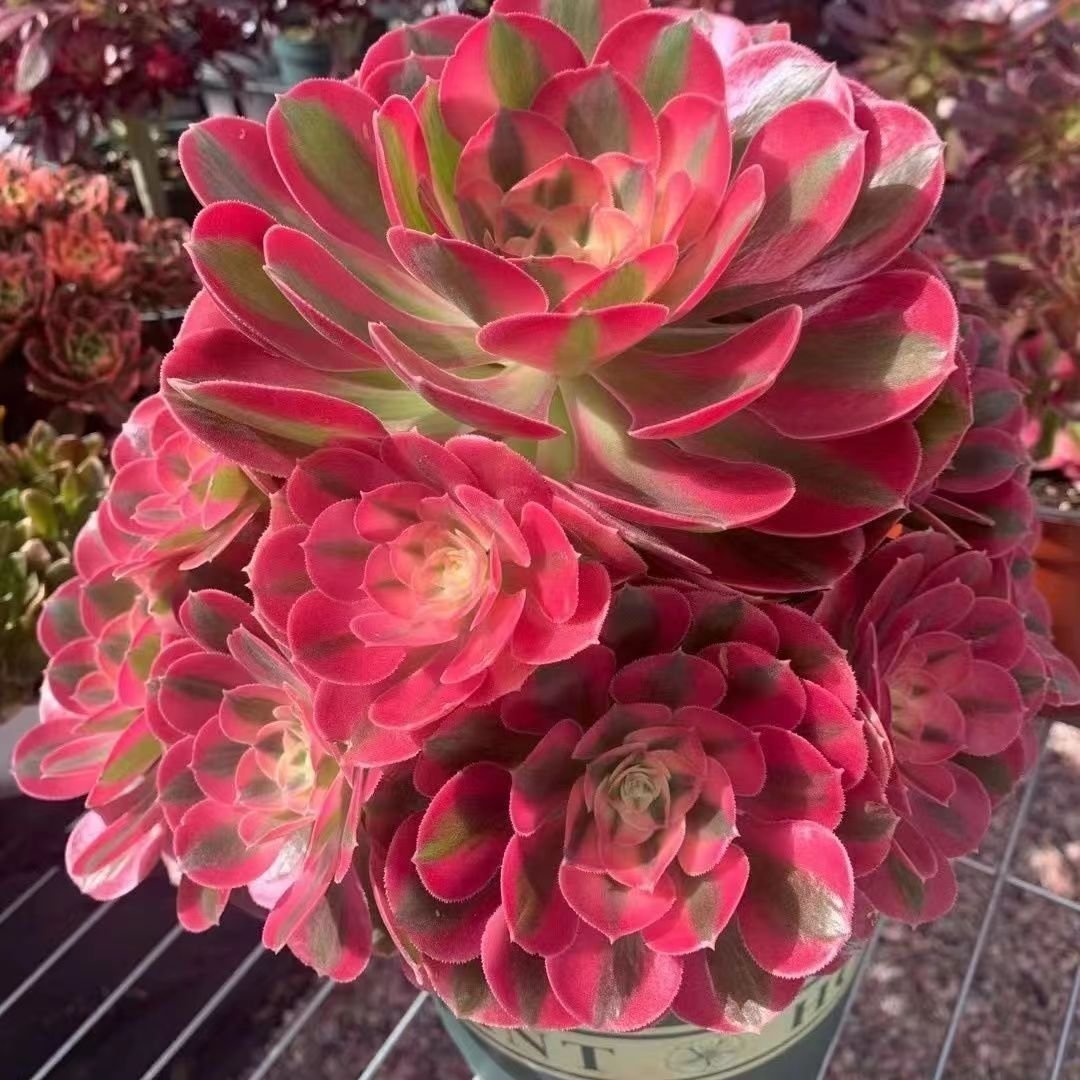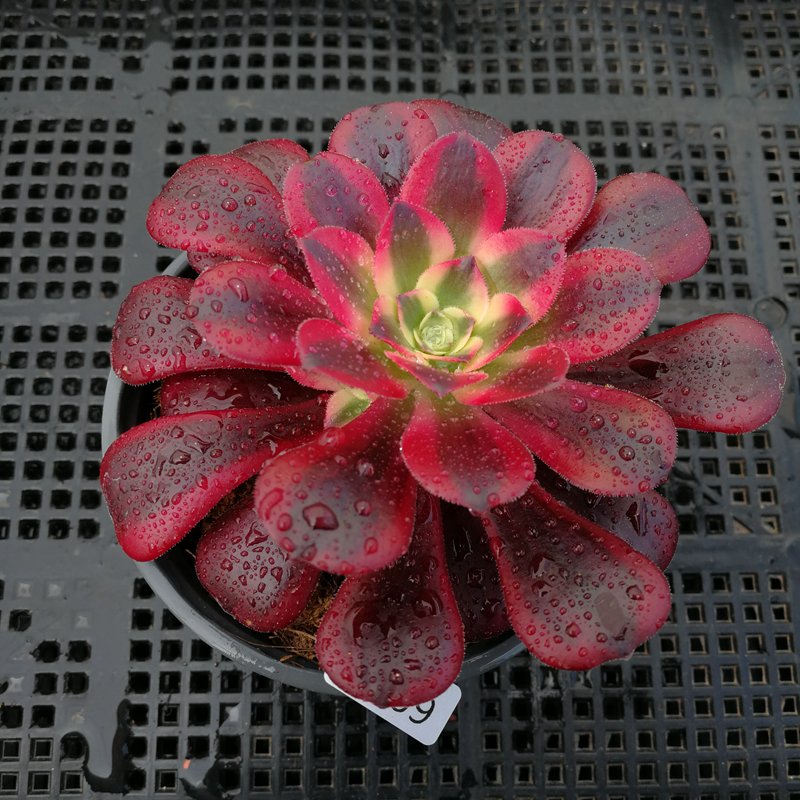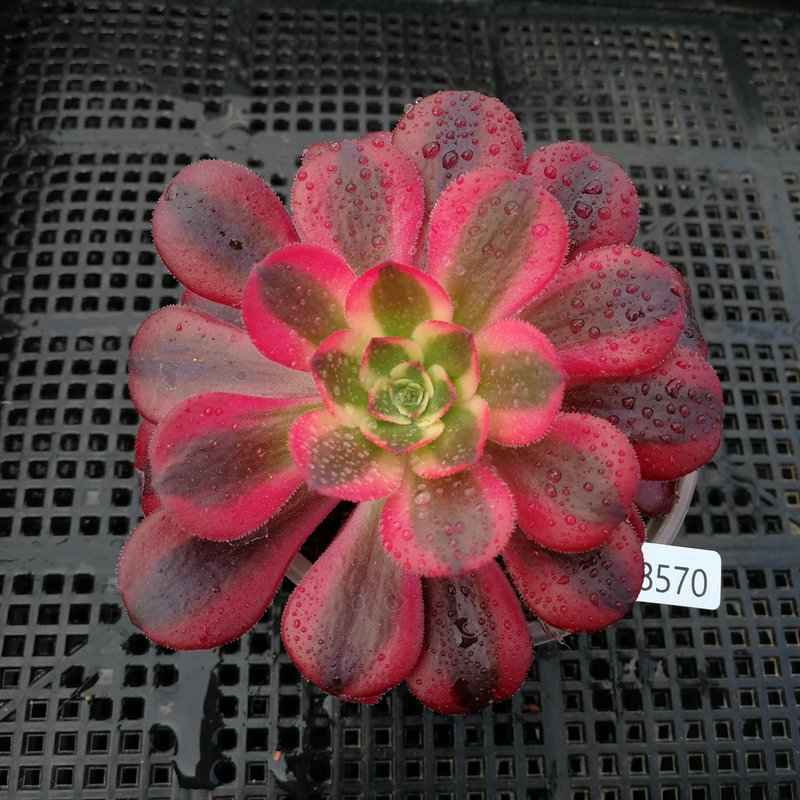
You can recognize aeonium medusa by its big, spoon-shaped leaves. The leaves have creamy color patches and bright green centers. The medusa rosettes grow close together in a shape like a rose. The edges are often a deep magenta color. If you look at other aeonium succulents, you will see the medusa has bold colors and a special leaf pattern. This succulent is easy to spot because it is large and looks very different from others.
Look carefully at each medusa rosette to find this unique aeonium in any group of succulents.
Key Takeaways
- Aeonium Medusa has big, spoon-shaped leaves. The leaves have creamy centers and dark magenta edges. These colors make bold patterns on the plant. The plant grows tight rosettes that look like roses. These rosettes make the plant look full and bushy. This makes it easy to see among other succulents. Small hairs grow along the leaf edges. These hairs make the leaves look soft. They also help you tell Medusa apart from other aeoniums. Bright sunlight makes the plant’s colors even brighter. Sunlight also helps the plant grow strong and healthy. Use soil that drains water well for this plant. Check the leaf shape, color bands, and rosette size. Doing this helps you find and care for Aeonium Medusa.
Aeonium Medusa Features

Leaf Shape
When you look at aeonium medusa, you notice the leaves first. Each leaf has a spoon shape with a soft, pointed tip. The edges of the leaves have tiny, fine hairs called ciliate margins. These hairs give the leaf a delicate look when you see the plant up close. The leaves feel waxy and fleshy, which helps the succulent store water. You can spot the difference between medusa and other aeonium plants by checking the leaf shape and texture. The spoon-shaped leaves make this variety stand out in any collection.
Color Patterns
Aeonium medusa shows off a mix of colors that change with the seasons and sunlight. The center of each leaf usually stays bright green, while the edges turn deep red or magenta. Sometimes, you see creamy or lime-colored bands running through the middle. When the plant gets more sun, the colors become even bolder. In some seasons, the leaves can show hints of yellow, pink, purple, or even a dark burgundy that almost looks black. This range of colors makes medusa one of the most eye-catching aeonium succulents you can grow.
Tip: Place your medusa in bright sunlight to see the most intense color patterns.
Rosette Structure
The rosette structure of aeonium medusa looks like a blooming rose. Each rosette grows close together, forming a tight, compact shape. The leaves overlap in layers, creating a full and rounded appearance. As the plant matures, it produces more rosettes that cluster around the main stem. This growth habit gives the succulent a lush, bushy look. You can easily identify medusa by its dense, rose-like rosettes, which are different from the looser shapes of some other aeonium varieties.
Size and Growth
Aeonium medusa grows taller and wider than many other succulents. A healthy plant can reach 12 to 18 inches in height and spread up to 24 inches across. Some medusa plants even grow rosettes over 8 inches wide. The plant grows best when you give it plenty of sunlight and well-draining soil. In the right conditions, medusa can reach its full size in two to three years. If you grow it in full sun and water it regularly, you will see faster and stronger growth. Plants kept in shade or with less water stay smaller and may look thin. Medusa also changes color with the seasons, showing different shades in spring, summer, fall, and winter. This succulent stays green all year and can survive dry periods, making it a good choice for many gardens.
Aeonium Comparison

Similar Aeonium Varieties
There are many aeonium types that look alike at first. Some common ones are Aeonium ‘Velour’, Aeonium ‘Sunburst’, and Aeonium ‘Kiwi’. All of these have rosettes and bright leaves. Aeonium ‘Velour’ is often mixed up with medusa. This is because both have strong colors and similar leaves. Aeonium ‘Sunburst’ has creamy yellow and green on its leaves. Aeonium ‘Kiwi’ has soft green centers and pink edges. Each type has its own color and leaf shape. Many gardeners like to collect different aeonium plants. They enjoy seeing all the colors and shapes.
Note: To tell them apart, look at the leaf edges and color patterns.
Distinguishing Features
You can find aeonium medusa by looking for special traits. Medusa is easy to spot because it has strong variegation. Its leaves have creamy or lime bands in the center. The edges are bright green and deep magenta. Sunlight makes the colors even brighter. Medusa is one of the most colorful aeonium succulents. The ciliate margins, or tiny hairs on the leaf edges, make medusa look soft up close. Aeonium ‘Velour’ has dark red edges but does not have the bold variegation. Other types might have pink or yellow, but not the same sharp contrast. Medusa grows bigger rosettes than most other aeonium plants. If you see a plant with a thick, rose-like rosette, strong color contrast, and fine hairs on the leaf edges, it is probably aeonium medusa.
Tip: When you want to identify aeonium succulents, check the size, color bands, and leaf margins.
Identifying Aeonium Succulents
In Person
When you see aeonium succulents up close, use your eyes and hands. First, look at the colors. Aeonium Medusa has bright green centers. There are creamy or lime bands and deep magenta edges. These colors are easy to see in sunlight. Next, check the leaf shape. Medusa leaves look like spoons with soft, pointed tips. If you touch the edges, you might feel tiny hairs. These ciliate margins feel soft and help you know it is Medusa.
You should also notice the rosette shape. Medusa grows tight, rose-like rosettes close together. The plant looks full and bushy most of the time. If you see a big succulent with thick, layered rosettes and strong colors, it could be Aeonium Medusa. Sometimes, older rosettes have flower spikes in the center. These spikes can help you know the plant, but they do not show all year.
Tip: Try using a small magnifying glass to see the fine hairs on the leaf edges. This helps you tell Medusa from other aeonium succulents.
In Photos
It can be easy to spot aeonium succulents in photos if you know what to check. Start by looking at the color pattern. Medusa has strong color bands and sharp contrasts, even in pictures. Look for creamy or lime bands in the middle of each leaf and deep magenta edges. Good photos will show these details.
Next, look at the rosette shape. Medusa’s rosettes are round and compact, with leaves that overlap in layers. If the photo is clear, you might see tiny hairs on the leaf edges. These hairs give the plant a soft outline in close-up photos.
You can use a simple table to compare features when looking at photos:
| Feature | Aeonium Medusa | Other Aeonium Varieties |
|---|---|---|
| Leaf Color | Green, cream, magenta | Green, yellow, pink |
| Leaf Edge | Fine hairs (ciliate) | Smooth or less hairy |
| Rosette Shape | Tight, rose-like | Loose or open |
| Size | Large, bushy | Smaller, less dense |
Many helpful guides, like those by Debra Lee Baldwin, use labeled pictures and clear descriptions to help you spot succulents. These guides show real-life and photo examples, so you can match what you see with trusted sources. They focus on what you can see, not on numbers or measurements, so it is easier to learn by looking.
Note: Always look at several photos from different angles. Lighting and camera quality can change how the colors and shapes look.
You can tell Aeonium Medusa by its spoon-shaped leaves. The leaves have bright color bands and look like a rose. Check for creamy centers and magenta edges on the leaves. There are also tiny hairs along the leaf edges. These things make Medusa different from other aeoniums.
Remember: Looking closely helps you become better at finding plants.
Try these ideas when you look at succulents in gardens or pictures. Soon, you will know Aeonium Medusa without any trouble.
FAQ
How do you identify Aeonium Medusa among other succulents?
You can spot Aeonium Medusa by its spoon-shaped leaves, creamy bands, and magenta edges. The rosettes look like roses. The plant grows large and bushy. You will see fine hairs on the leaf edges. These features help you tell it apart.
What type of soil does Aeonium Medusa need?
You must use well-draining soil for Aeonium Medusa. This soil lets water flow through quickly. It keeps the roots healthy. Well-draining soil prevents rot. You can mix sand or perlite into potting soil. This mix works best for succulent care.
How much light does Aeonium Medusa require?
Place your plant in bright light for the best color. Aeonium Medusa loves sunlight. You can put it near a sunny window or outside. Bright light helps the colors stay bold. If you use less light, the plant may look pale.
Why is well-draining soil important for Aeonium Medusa?
Well-draining soil protects the roots from too much water. You avoid root rot when water drains fast. This soil type is key for healthy growth. Always check that your pot has holes. Well-draining soil is a must for proper care.
Can you grow Aeonium Medusa indoors?
Yes, you can grow Aeonium Medusa indoors. Use well-draining soil in a pot. Place the plant where it gets bright light. Water only when the soil feels dry. Good care indoors keeps your plant healthy. Remember, well-draining soil is always important.
Tip: Always check the soil before watering. Well-draining soil dries out faster, so you avoid overwatering.